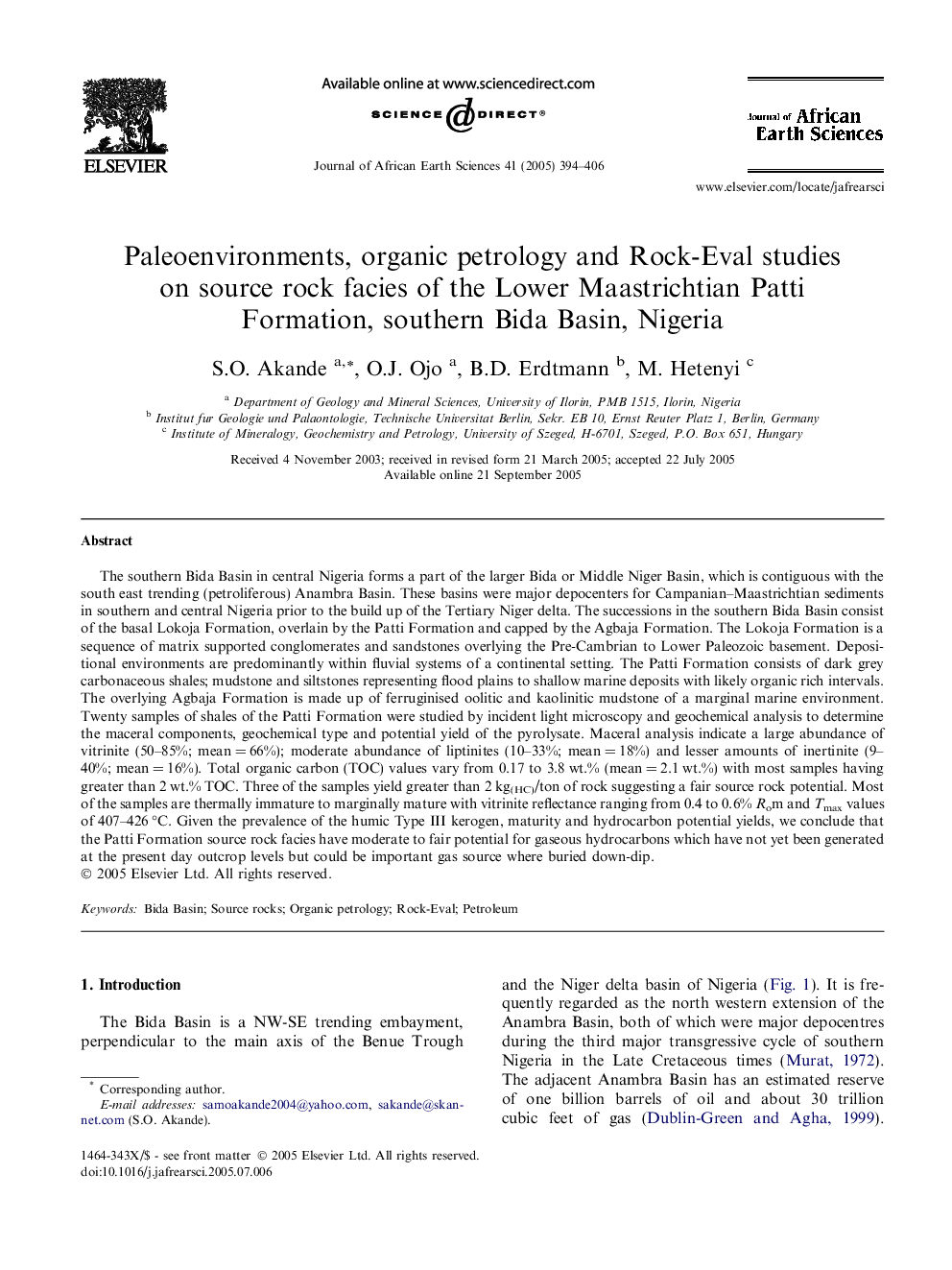| Article ID | Journal | Published Year | Pages | File Type |
|---|---|---|---|---|
| 9535252 | Journal of African Earth Sciences | 2005 | 13 Pages |
Abstract
The southern Bida Basin in central Nigeria forms a part of the larger Bida or Middle Niger Basin, which is contiguous with the south east trending (petroliferous) Anambra Basin. These basins were major depocenters for Campanian-Maastrichtian sediments in southern and central Nigeria prior to the build up of the Tertiary Niger delta. The successions in the southern Bida Basin consist of the basal Lokoja Formation, overlain by the Patti Formation and capped by the Agbaja Formation. The Lokoja Formation is a sequence of matrix supported conglomerates and sandstones overlying the Pre-Cambrian to Lower Paleozoic basement. Depositional environments are predominantly within fluvial systems of a continental setting. The Patti Formation consists of dark grey carbonaceous shales; mudstone and siltstones representing flood plains to shallow marine deposits with likely organic rich intervals. The overlying Agbaja Formation is made up of ferruginised oolitic and kaolinitic mudstone of a marginal marine environment. Twenty samples of shales of the Patti Formation were studied by incident light microscopy and geochemical analysis to determine the maceral components, geochemical type and potential yield of the pyrolysate. Maceral analysis indicate a large abundance of vitrinite (50-85%; mean = 66%); moderate abundance of liptinites (10-33%; mean = 18%) and lesser amounts of inertinite (9-40%; mean = 16%). Total organic carbon (TOC) values vary from 0.17 to 3.8 wt.% (mean = 2.1 wt.%) with most samples having greater than 2 wt.% TOC. Three of the samples yield greater than 2 kg(HC)/ton of rock suggesting a fair source rock potential. Most of the samples are thermally immature to marginally mature with vitrinite reflectance ranging from 0.4 to 0.6% Rom and Tmax values of 407-426 °C. Given the prevalence of the humic Type III kerogen, maturity and hydrocarbon potential yields, we conclude that the Patti Formation source rock facies have moderate to fair potential for gaseous hydrocarbons which have not yet been generated at the present day outcrop levels but could be important gas source where buried down-dip.
Related Topics
Physical Sciences and Engineering
Earth and Planetary Sciences
Geology
Authors
S.O. Akande, O.J. Ojo, B.D. Erdtmann, M. Hetenyi,
